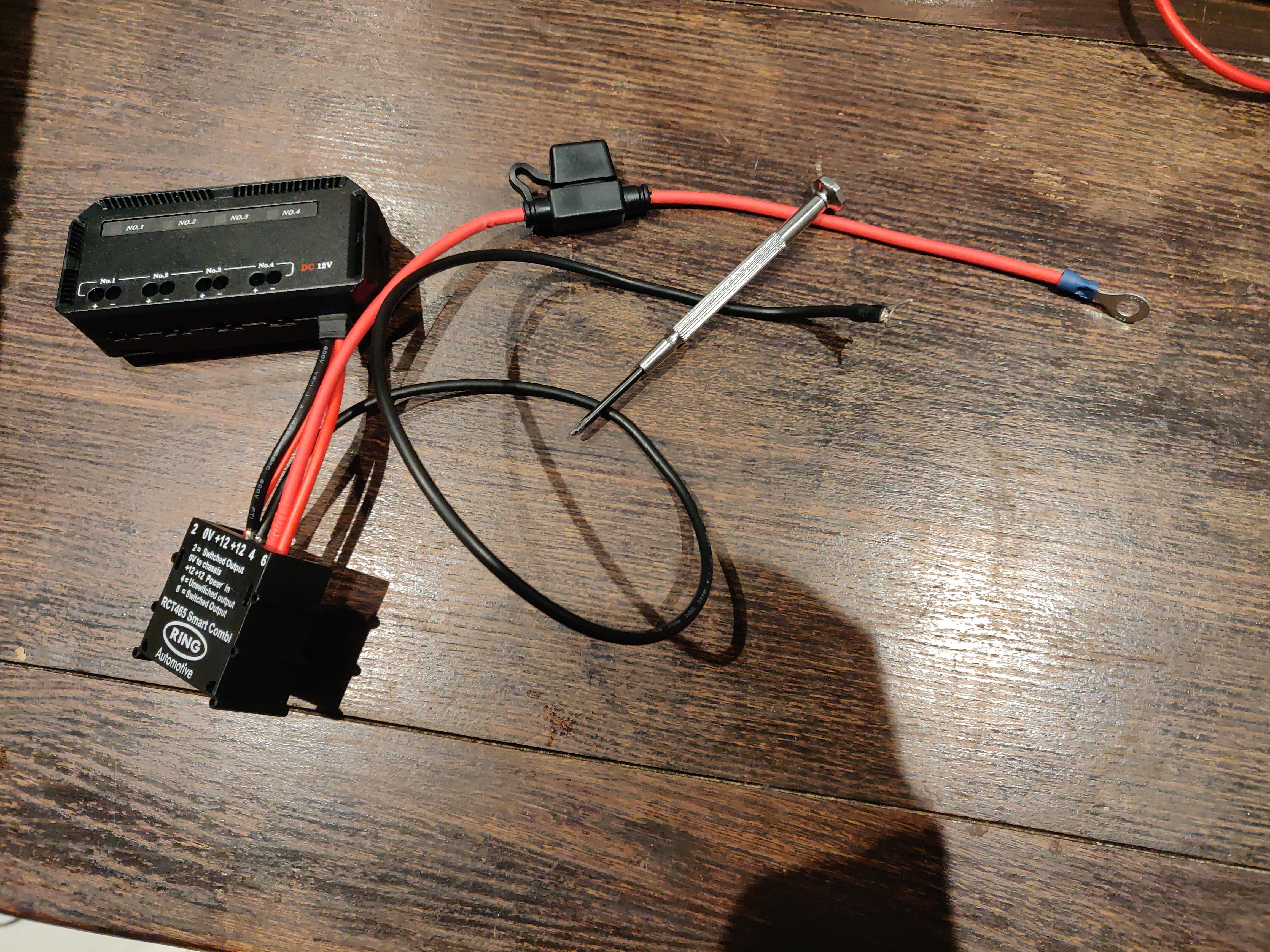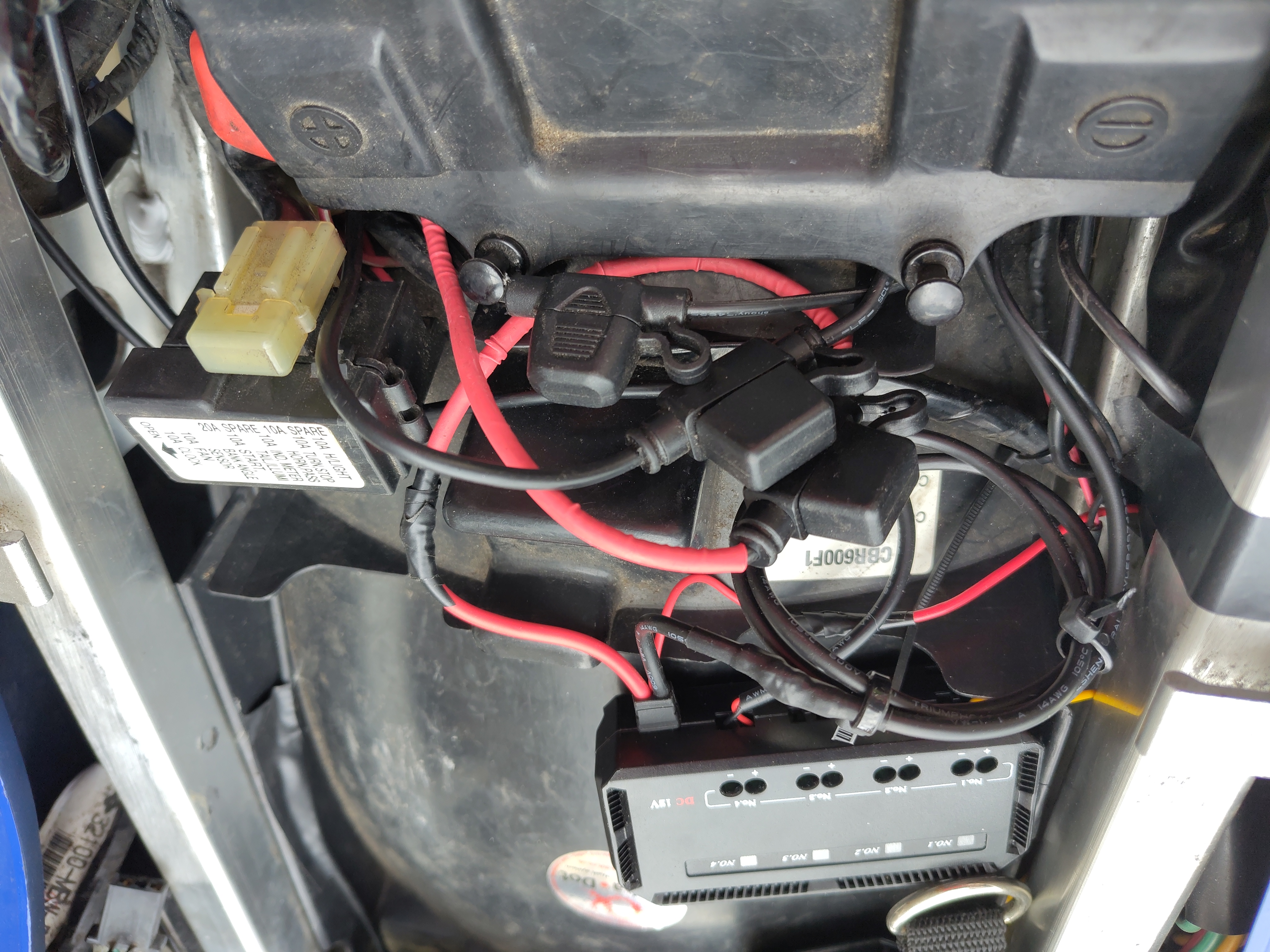Voltage-sensitive relay: I tried it so you don't have to#
Sat Aug 2 14:46:55 2025
In 2001, "auxillary power" was not a concern of the manufacturers of sportsbikes - even otherwise practical sportsbikes like the CBR600F. It doesn't come with any handy USB or 12V sockets or even spare fuseholders under the seat.
In 2025 I've resisted bedecking it with a million current draws, but I do need power for the USB connector that my phone is connected to, and for the wired-in dashcams, and I thought I'd try and be clever.
The idea was a good one. As eny fule kno, a car/bike battery puts out around 12V and an alternator provides 14V, so if you have accessories that you want to work only when the engine's running and you're not at risk of draining the motorbike battery, you could install a voltage-sensitive relay so that they're only powered when the supply voltage exceeds, say, 13V. Therefore:

-
an Aliexpress clone of the Oxford accessory fuse box, this has 4 5A fused connections through relays, and turns them on when it sees a voltage on the thin red wire that you're supposed to wire to a switched live
-
but instead of finding a relatively exposed accessory 12v supply somewhere in the loom and tapping it, I connected the thin red wire to a 20A voltage-sensitive relay intended for charging caravan batteries only when the car alternator is running.
So, my accessories get power when the supply voltage exceeds 13V, and cut out again when it drops to 12.2. Which seems on the low side, but there's a little pot in the VSR to adjust it.
Basically I'd made a Healtech Thunderbox clone but half the price and four times the ugliness.
After a few rides I concluded that it doesn't actually work very well though, because of the finickiness of the threshold. You see, both those voltages quoted above are nominal. A fully charged battery could be pumping out as much as 12.8V, and - on my bike at least - when the engine is at idle speed and the headlights are on and the radiator fan is running, the alternator voltage is not much more (or possibly even less). So, my satnav device, which is quite an elderly Android phone with not much life left in its own battery, wasn't getting power at low speeds. And whhen i got home after a ride and took the seat cover off to take stuff out of storage, I could see the LEDs merrily glowing away.
So, tl;dr I took it came out again. The fusebox is still there, but I took the voltage-sensitive magic out and now it just connects to a wire spliced into the taillight Result: now my USB cable turns on when the ignition switch and the lights are on[*], not when the voltage rises above a notional 13V.

You might be able to see in the picture there are three inline fuse holders. Yes, I actually have more things that need an always-on power connection (dashcam, optimate, and the accessory fuse box itself) than I have accessories.
Someone should make a secondary fuse box that has both switched and unswitched connections.
[*] my bike is old enough to actually have a switch to turn the headlight off. I pretty much never use it, though, unless it's been standing for a long time and I'm worried it won't start with the added power drain from the headlights.